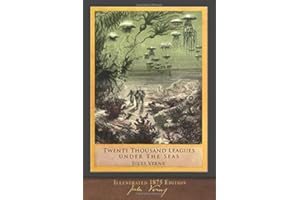Author: Elena Merrick, 17th Century Literary Criticism Specialist
Elena Merrick is a literary scholar and historian with a focus on early modern literature. Her work explores the evolution of literary theory in the 17th century, drawing connections between historical events and literary developments.
A Closer Look at 17th Century Literary Criticism
The 17th century was a period of significant transformation in literature and criticism, giving birth to profound insights that continue to influence literary thought today. From Shakespeare’s plays to Cervantes’ Don Quixote, the era’s critical works pushed boundaries, reflecting on societal norms, politics, and human nature. Below is a curated list of the Top 10 Books that offer invaluable perspectives on 17th-century literary criticism. Whether you’re a student, scholar, or a curious reader, these selections are perfect for anyone looking to explore the intellectual richness of the period. 17th Century Literary Criticism rocks!
10. Shakespeare’s Twelfth Night (The Connell Guide To …)
Author: David Schalwyk
Rating: ★★★★☆ 4.3 out of 5 stars (15 ratings)
Category: 17th Century Literary Criticism

David Schalwyk’s guide to Shakespeare’s Twelfth Night delves into the complexities of identity, gender roles, and social structures that are prevalent in 17th-century literary criticism. It’s a crucial read for understanding how literature from this era reflects the societal tensions of the time.
Why We Chose It:
Schalwyk offers a nuanced analysis of one of Shakespeare’s most celebrated plays, shedding light on the intersection between humor and societal expectations in 17th-century literary criticism.
Fun Fact:
The play’s title refers to the festive conclusion of the Christmas season during the 17th century, marked by masquerades and revelry, much like the disguises and mistaken identities in the play itself. 17th Century Literary Criticism rocks!
Buy it now on Amazon.
9. Shakespeare’s Antony and Cleopatra (The Connell Guide To …)
Author: Adrian Poole
Rating: ★★★★★ 4.8 out of 5 stars (5 ratings)
Category: 17th Century Literary Criticism

In his analysis of Shakespeare’s Antony and Cleopatra, Adrian Poole explores the complex dynamics of power, love, and betrayal, reflecting on how these themes were central to 17th-century literary criticism. This guide offers a fresh perspective on Shakespeare’s depiction of political and emotional drama.
Why We Chose It:
Poole’s guide enhances the reader’s understanding of how 17th-century literary critics grappled with questions of imperial power and personal ambition, as mirrored in the volatile relationship between Antony and Cleopatra.
Fun Fact:
The famous asp bite that kills Cleopatra has become one of the most dramatized deaths in literature and has been interpreted in various ways throughout the centuries.
Buy it now on Amazon.
8. Shakespeare’s Macbeth (The Connell Guide To …)
Author: Graham Bradshaw
Rating: ★★★★☆ 4.6 out of 5 stars (23 ratings)
Category: 17th Century Literary Criticism

Macbeth, one of Shakespeare’s darkest and most haunting tragedies, is expertly analyzed by Graham Bradshaw. His guide examines the critical themes of ambition, guilt, and the supernatural—all essential topics in 17th-century literary criticism.
Why We Chose It:
This guide is perfect for readers looking to explore how 17th-century critics interpreted the play’s portrayal of moral downfall and the consequences of unchecked ambition. 17th Century Literary Criticism rocks!
Fun Fact:
In theater, Macbeth is often called “The Scottish Play” due to superstitions about speaking its name, believed to bring bad luck.
Buy it now on Amazon.
7. Lectures on Don Quixote
Author: Vladimir Nabokov
Rating: ★★★★☆ 4.3 out of 5 stars (53 ratings)
Category: 17th Century Literary Criticism

Vladimir Nabokov’s Lectures on Don Quixote offer a profound exploration of Cervantes’ masterpiece through the lens of 17th-century literary criticism. Nabokov’s witty and scholarly approach breathes new life into the classic, examining its narrative complexity and philosophical undertones.
Why We Chose It:
Nabokov’s unique perspective on Don Quixote helps readers grasp the critical reception of the novel during the 17th century, making this book a must-read for those interested in literary history and criticism.
Fun Fact:
Nabokov believed that Cervantes’ novel was as much a tragic exploration of human folly as it was a comedic satire, offering a fresh take on its critical interpretation.
Buy it now on Amazon.
6. Japan on the Jesuit Stage: Two 17th-Century Latin Plays with Translation and Commentary
Author: Akihiko Watanabe
Rating: ★★★★☆ 4.4 out of 5 stars
Category: 17th Century Literary Criticism

Watanabe’s book explores two 17th-century Jesuit plays that dramatize European encounters with Japan. This work offers a unique perspective on how the East was perceived by Western critics and writers, adding another layer to 17th-century literary criticism.
Why We Chose It:
This book presents a fascinating exploration of cross-cultural exchanges and the role they played in shaping 17th-century literary criticism, particularly how the West viewed the East during this period.
Fun Fact:
These plays were performed by Jesuits in Europe to portray Japan to an unfamiliar audience, highlighting the era’s fascination with foreign cultures.
Buy it now on Amazon.
5. The Scarlet Letter (Illustrated): The 1850 Classic Edition with Original Illustrations
Author: Nathaniel Hawthorne
Rating: ★★★★☆ 4.6 out of 5 stars (64 ratings)
Category: 17th Century Literary Criticism

Nathaniel Hawthorne’s The Scarlet Letter explores themes of sin, guilt, and redemption through a 17th-century Puritanical lens. This illustrated edition brings the classic text to life, offering critical insights into how Hawthorne’s novel reflects the moral rigidity of the era.
Why We Chose It:
This edition, with its original illustrations, provides readers with a visual representation of the novel’s critical themes, further enriching the experience of understanding 17th-century literary criticism through Hawthorne’s eyes.
Fun Fact:
Hawthorne’s ancestor, John Hathorne, was a judge during the infamous Salem Witch Trials, which influenced his portrayal of Puritan society in The Scarlet Letter.
Buy it now on Amazon.
4. Arsène Lupin, Gentleman-Burglar (Illustrated): Arsène Lupin 100th Anniversary Collection
Author: Maurice Leblanc
Rating: ★★★★☆ 4.7 out of 5 stars (679 ratings)
Category: 17th Century Literary Criticism

Maurice Leblanc’s Arsène Lupin is an engaging read, offering a critical reflection on themes of crime, justice, and morality, which resonate strongly with 17th-century literary criticism.
Why We Chose It:
This classic French detective story, now in a beautifully illustrated edition, allows readers to understand how European literature engaged with questions of law, order, and moral ambiguity—central themes in 17th-century literary criticism.
Fun Fact:
Arsène Lupin is considered the “French Sherlock Holmes” and was often portrayed as a charming and clever antihero, capturing the imagination of readers for over a century.
Buy it now on Amazon.
3. Illustrated Hawthorne: The House of the Seven Gables
Author: Nathaniel Hawthorne
Rating: ★★★★☆ 4.5 out of 5 stars (55 ratings)
Category: 17th Century Literary Criticism

The House of the Seven Gables, set in 17th-century New England, delves into themes of ancestral guilt and retribution. This illustrated edition offers readers visual insight into Hawthorne’s dark, gothic novel, which explores themes central to 17th-century literary criticism.
Why We Chose It:
Hawthorne’s exploration of family, inheritance, and guilt offers readers a deep dive into how 17th-century literary criticism handled these complex, often unsettling, themes.
Fun Fact:
The novel was inspired by a real house in Salem, Massachusetts, which Hawthorne’s cousin owned and which still stands today as a museum.
Buy it now on Amazon.
2. Twenty Thousand Leagues Under the Seas (Illustrated 1875 Edition): F. P. Walter Translation
Author: Jules Verne
Rating: ★★★★★ 4.7 out of 5 stars (543 ratings)
Category: 17th Century Literary Criticism

Jules Verne’s Twenty Thousand Leagues Under the Seas offers an imaginative journey beneath the ocean’s surface. This 1875 illustrated edition is beautifully rendered and enhances the reading experience of Verne’s classic adventure tale.
Why We Chose It:
Verne’s exploration of the unknown resonates with the adventurous spirit of 17th-century literary criticism, making it a must-read for literature enthusiasts.
Fun Fact:
The title refers to the distance traveled under the sea, not the depth, which confuses many first-time readers.
Buy it now on Amazon.
1. Twenty Thousand Leagues Under the Sea (Illustrated): The Classic Edition with Original Illustrations
Author: Jules Verne
Rating: ★★★★★ 4.7 out of 5 stars (48 ratings)
Category: 17th Century Literary Criticism

This timeless classic by Jules Verne is enhanced by stunning illustrations, making this edition an ideal choice for readers interested in 17th-century literary criticism and adventure tales alike. Verne’s work inspired countless generations, and the original illustrations make it a visual delight.
Why We Chose It:
Verne’s narrative is both imaginative and deeply connected to the critical thought of its time, making this edition essential for those studying 17th-century literary criticism.
Fun Fact:
Jules Verne is often referred to as the “Father of Science Fiction” and was ahead of his time, predicting technological advancements like submarines and deep-sea exploration.
Buy it now on Amazon.
Explore More Top 10 Categories
Check out some more Top10 categories
“As an Amazon Associate I earn from qualifying purchases.”
